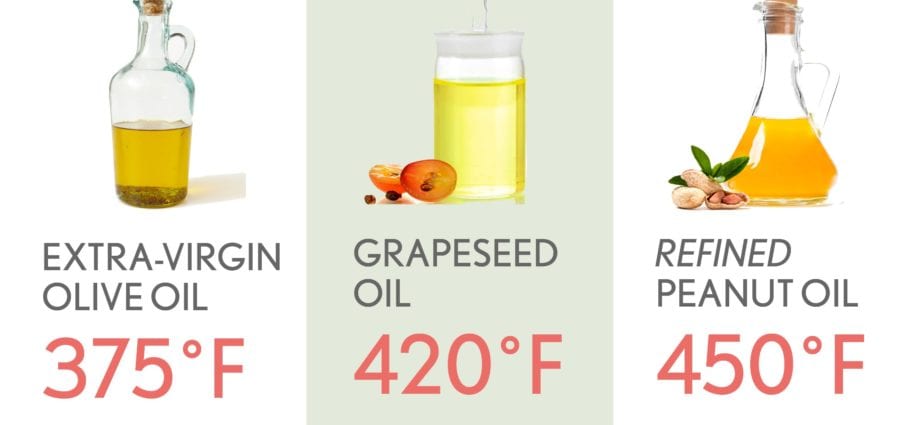To get the most out of your vegetable oil, you should choose the best option for your particular cooking method. First, you need to know the temperature of combustion (smoke formation) of oils. Because when oil starts to smoke when heated, it means that toxic gases and harmful free radicals are formed in it.
Unrefined cold-pressed vegetable oils, such as extra virgin olive oil, can be safely added to salads and ready-made meals, but avoid processing them at high temperatures.
Use coconut oil (high in healthy saturated fat and medium chain triglycerides), extra virgin olive oil (virgin), avocado oil, rice bran oil, and even small amounts of butter. The table comparing the burning temperatures of cooking oils at the end of the text will help you figure it out.
Second, it is better to choose oils with a higher content of omega-3 fatty acids for cooking at low temperatures or for adding to ready-made meals and salad dressings, as they support cell health and reduce the risk of stroke and heart attack. They are also known for their anti-inflammatory properties.
Omega-6s are also needed to maintain the integrity of the cell walls and provide energy to the heart muscle. But excess of these fatty acids can provoke inflammation in the body. The optimal ratio of omega-3 and omega-6 for us is 1: 3, but a modern diet with an excess of refined oils greatly violates this ratio – up to 1:30.
In addition, cooking oils high in omega-9 fatty acids are very beneficial. They are considered “conditionally irreplaceable”: the human body produces them on its own, but in a very small volume. Consumption of omega-9 (such as oleic acid) reduces the risk of heart attacks, atherosclerosis, and helps in the prevention of cancer.










